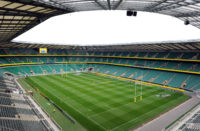You can expect anything with the adoption of technology advancements. The sporting scene, particularly rugby, has experienced a major shift with the introduction of the mouth guard technology.
World Rugby is at the forefront of incorporating technology to ensure players are safe in the fast-paced game. Players, fans, and stakeholders have commented on this invention and how it affects the overall performance in a match.
We evaluate everything that informs this technology – read on for insights. Before diving in, get the ggbet casino login and see scheduled rugby matches you can bet on.
What is the Smart Mouth Guard and How Does it Work?
Smart mouth guard is a sensor-based technology designed to detect any concussion during a rugby match. It is a partnership between World Rugby and Prevent Biometrics to minimize concussion complaints.
The unending and worrying concussion rates recorded by players have been wanting, and perhaps, the innovation could help determine genuine complaints. For instance, players have claimed and been removed from the pitch without showing serious symptoms.
With the introduction of smart mouth guard technology, the device can analyze head-to-head collisions, accelerations, and decelerations. The advancement now means World Rugby can have a complete overview of a head injury assessment (HIA) before ruling out players from the field.
The device has been incorporated with HIA protocols with other features that can scan the brain. The sensors then analyze the head impact to see how serious the injury is. For instance, the threshold for male players is 70g against 4,000 radians per second, while it is estimated at 55g for females.
Players must wear the device during a match, which can be used to collect data regarding the seriousness of a head injury as approved by the World Rugby Executive Group. Individuals who can’t adhere to this rule must communicate with management and have justifiable reasons, such as a medical report.
Players can only return to the field if they pass the test. You should know that players who refuse to wear the device are not eligible for the off-pitch assessment and cannot be recalled on the pitch if they have been substituted.
In case of a concussion where a player is taken off the field, there must be a review before a player is allowed back. Ideally, the mouthguard technology means all professional players will be cared for to enhance management and performance, thus prioritizing players’ welfare.
The Use of Mouth Guards in World Rugby
Implementing this technology has been a much-awaited decision, even as players’ safety remains the main reason behind the innovation. There have been complaints about its usage, and the innovators are still figuring out if the device is effective and worth using.
The protocol was first used at Six Nations during the WXV tournament in the autumn. Gregor Townsend, Scotland’s coach, suggested that there was a need to use the device correctly after Turner’s incident.
The teething problems are evident as the device has been used incorrectly occasionally. For instance, Scott Barrett, Chief’s skipper, was upset when Liernert-Brown’s assessment affected the outcome of a match against the All Blacks.
Losing the game even when there were obvious signs he was struggling with the concussion. Dragging a player out of the pitch without analyzing the situation objectively can be disheartening. According to him, this is disruptive, considering a scenario where three players were called out of the pitch, only for them to be recalled because they didn’t have serious injuries.
For tacticians, the hardest bit is to find a balance when deciding because of the uncertainty of outcomes. An example is when you are unsure of reserving critical players on your bench, the unforeseen possibilities like a match going into extra time or saving an elite player.
Players are also struggling with accurate sizing, with some struggling to fit the device appropriately. Proper communication and difficulties in breathing are additional concerns that should be looked into.
























